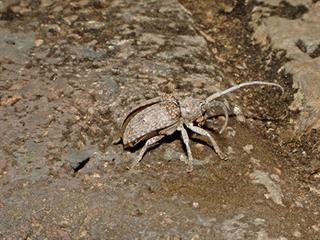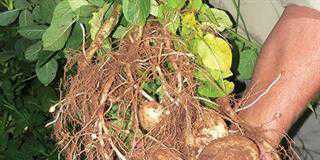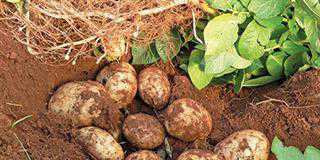
The fig is a large deciduous tree. The edible fig itself is actually not a fruit, but the mature ‘infructescence’ of the tree – a hollow, fleshy structure lined on the inside with tiny flowers. A small opening allows the fig wasp to enter and pollinate the flowers. Once pollination has taken place, the seeds develop.
A fig tree can suffer from several diseases:
Anthracnose
This is a group of fungal diseases that cause black/brown spots on the leaves, which gradually turn yellow and wilt. Treat with a fungicide.
Fig rust
The leaves develop small orange spots that increase in size as the season progresses. The leaves themselves may droop. Fig rust can be controlled with copper-based fungicides.
Fig mosaic
This is caused by a virus that produces blotches on the leaves. The virus is spread by mites and the only way to treat it is to kill the mites with miticide or horticultural oil.
Endosepsis
Endosepsis is spread by the pollinating wasp that enters the green fig to lay eggs. When the wasp dies inside the fig, the fungus develops on its body. The tree should be destroyed and the surrounding soil treated with a fungicide. Do not replant for 12 months.
Aspergillosis
Aspergillus is a fungus that causes the flesh on the inside of the fig to turn green and then powdery. If left untreated, the ripe figs rot and the tree sheds its leaves. Treatment is as for Endosepsis.
Phomopsis canker
This fungus enters the tree through pruning wounds or injuries. The infected bark develops sunken growths of dead tissue around the wound. Removing the infected branches is the most effective way of controlling phomopsis canker.
Insect pests
Pests can be as great a problem to fig trees as fungal and viral infections. They include several species of beetle, fig scale, spider mite, vinegar flies and nematodes. A serious and common pest is the fig tree borer (Phryneta spinator). The female lays its eggs near the base of a branch. They take about two weeks to hatch and the larvae then feed on the bark before tunnelling into the tree.
Control is difficult when the larvae are in the tree. Squirt insecticide into the tunnels with a syringe (after first testing it on a leaf to ensure that it will not harm the tree). Enclose the lower portion of the tree in shade netting to prevent the female from laying her eggs in the bark. Make sure that the netting does not touch the tree; if it does, the female will still be able to land on the bark and lay her eggs.
Encircle the top of the netting with silver foil coated with Vaseline to keep the beetles from breaching it. Laying shade netting on the ground around the base of the tree will also help to stop newly emerged beetles from climbing the tree. The fig tree borer has very few natural enemies, although a parasitic fungus called Isaria and several species of parasitic wasps can attack the larvae.
Paul Donovan, a Botswana-based biologist, advises farmers on pest control.













